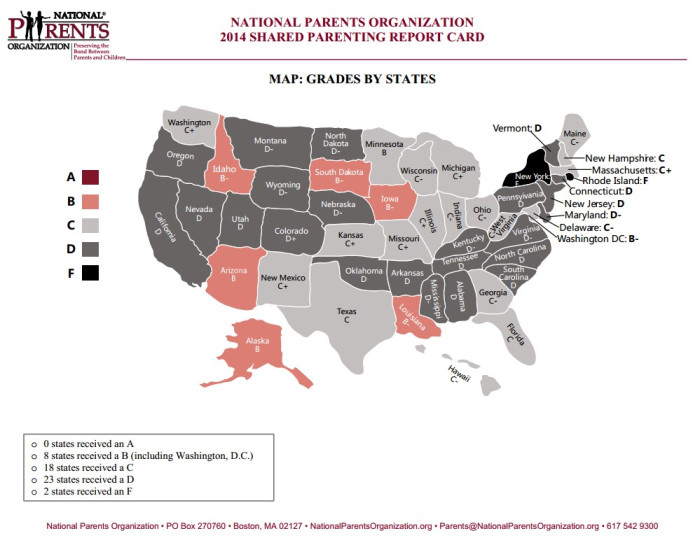One of the most complicated and often contentious issues for separating parents is whether or not very young children (under age 3) should spend the night in both households. On the one hand, many advocates of continued father involvement encourage dads to stay involved and some of these dads want to keep their children overnight. However, there is a growing body of scientific evidence that suggests that young children’s well-being may be adversely affected by frequent overnight stays for young children.
Samantha Tornello and colleagues (2013) published some important new evidence that suggests that frequent overnight stays by infants and toddlers with their non-reseidential fathers can contribute to insecure attachments. (Note: Attachment has been found to be a strong predictor of child and adult psychological adjustment and seems to be the foundation of positive relationships with others (See Bretherton, et al., 2011).
In February 2014, Paul Millar and Edward Kruk published an article taking issue with some of the analyses and interpretations in the Tornello et al. paper. Two of the authors of the original paper (Emery & Tornello, 2014) responded to the issues raised by Millar and Kruk. Some of the critique by Millar and Kruk appears to be confusion about whether the findings. Due to the mislabeling of a table (Table 5), Millar and Kruk interpreted these finding in the opposite direction of Tornello et al. Many of their other criticisms such as the validity of the attachment measure and the limits of the sample are important and require careful interpretation of the findings, but await other evidence to determine whether these findings hold up. At the moment 4 out 5 studies of this issue have found that overnight stays by infants and/or toddlers leads to attachment issues.
The one issue raised by Millar and Kruk that was not addressed by Emery and Tornello is the attachment of these children to other caregivers– the non-residential fathers, grandparents, child care providers, etc. I have not looked carefully at the other information we know about the participants in the Fragile Families study, but these families were “fragile families.” Could staying overnight with non-residential fathers represent the degree of chaos in the mothers’ household rather than “paternal involvement?” How are the residents in the “father’s household”– grandparents or not? i don’t know the answers to these questions, but it would be good to find out more about these issues.
Finally, all of the studies to date have some limitations and this evidence cannot be described as definitive. This is a complicated issue and no single study should be the basis for policy and practice by America’s court system, but this new work by Tornello and colleagues has provided a thoughtful analysis.
For references and further reading on these issues see the following:
Bretherton, I, Seligman, S, Solomon, J, Crowell, J. McIntosh, J. (2011). “If I could tell the judge something about attachment…” Perspectives on attachment theory in the family
law courtroom. Family Court Review, 49, 539-548. doi: 10.1111/j.1744-1617.2011.01391.x
Emery, R. E., & Tornello, S. L. (2014). Rejoinder to Millar and Kruk (2014): Who assumes the burden of proof when there is no neutral null hypothesis? Journal of Marriage and Family, 76(1), 237-240. doi:10.1111/jomf.12070
George, C., Solomon, J. and McIntosh, J, (2011). Divorce in the Nursery: On infants and overnight care. Family Court Review, 49, 521-529. doi: 10.1111/j.1744-1617.2011.01389.x
McIntosh, J., Smyth, B., Kelaher, M., Wells, Y., & Long, C. (2010). Post-separation parenting arrangements and developmental outcomes for infants and children. Canberra, Australia: Attorney General’s Department.
Millar, P., & Kruk, E. (2014). Maternal attachment, paternal overnight contact, and very young children’s adjustment: Comment on Tornello et al. (2013). Journal of Marriage and Family, 76(1), 232-236. doi:10.1111/jomf.12071
Solomon, J., & George, C. (1999). The development of attachment in separated and divorced families: Effects of overnight visitation, parent, and couple variables. Attachment and Human Development, 1, 2-33. doi: 10.1080/14616739900134011
Solomon, J., & George, C. (1999). The effects of overnight visitation in divorced and separated families: A longitudinal follow-up. In J. Solomon & C. George (Eds.), Attachment Disorganization (pp. 243-264). New York, NY: Guilford Press.
Tornello, S. L., Emery, R., Rowen, J., Potter, D., Ocker, B. and Xu, Y. (2013), Overnight Custody Arrangements, Attachment, and Adjustment Among Very Young Children. Journal of Marriage and Family, 75, 871–885. doi: 10.1111/jomf.12045
